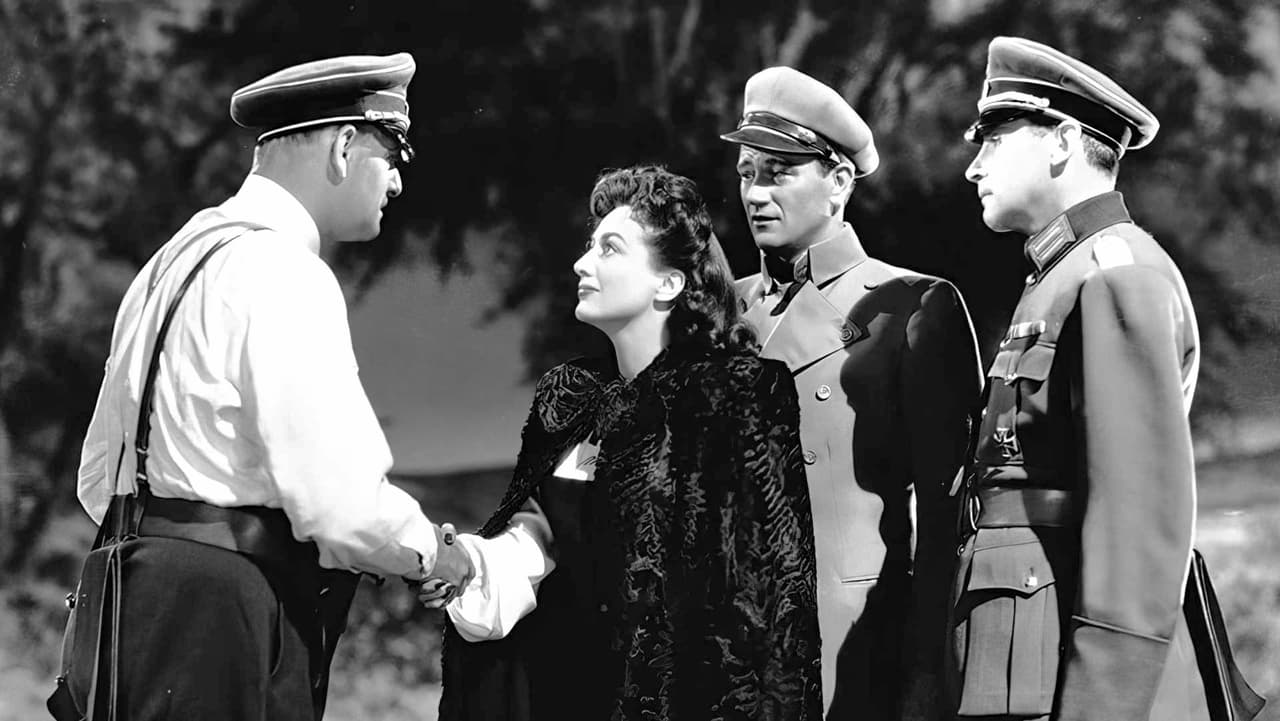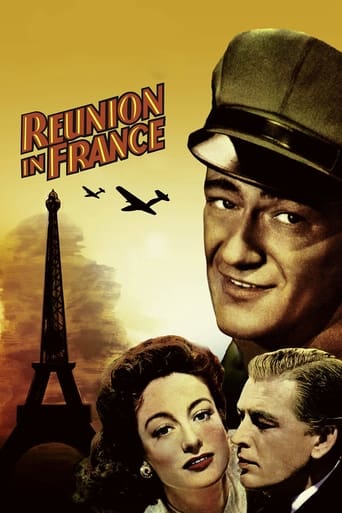

Here's another fine example of how the shortage of talent in Hollywood during the war lives on in infamy. Once again we are treated to another of Wayne's stinkers. Fortunately for him there was a war on and many of the real actors in Hollywood were either in uniform or the special services.Crawford put it aptly, when she said that if in the afterlife there is punishment for our sins she would be forced to watch this movie over and over again.Another of a all too long list of 1940s, 'good enough', flag waving efforts by Wayne while the real talent in Hollywood including the aging John Ford were away in uniform doing the heavy lifting for the country.Some of the other reviews here did make me chuckle as they reminded me of a comment by an old family friend who actually served in the OSS. He noted, 'if ever I were to meet up with a German who admitted to being a Nazi and a Frenchman who wasn't in the resistance I'd be in the company of a couple honest people'.Two stars for this stinker but they're only for the supporting character actors.
... View MoreReunion in France is excruciating to listen to because of the lame attempts at German, French and British accents and the pathetic pronunciations of German and French names and words. It begins with a speech by a "French" general in which the American actor playing him can barely restrain his southern accent (I expected him at any minute to say y'all). I understand that there probably was a shortage of German and French actors in Hollywood at the time. But surely there were actors who could do believable foreign accents? Several times "Germans" speak several sentences in German and the pronunciation is so bad that it comes off as gobbledygook.The film is a heavy-handed propaganda piece: The Germans are fat and coarse. The French are noble and self-sacrificing. They lost the war not because of poor planning, insufficient defenses and inept military and political decisions, but because France was "betrayed." It's all a bit overblown and accompanied by stabs of dramatic background music.It's always interesting to see John Wayne in an early, non-western role. In this film, however, he seems unnecessary and the film slows down drastically once he arrives. If he was intended to be the patriotic opposite of the Nazi sympathizer character and the second man in a love triangle, he arrives in the film too late to register strongly as either.
... View MoreInteresting film with Joan Crawford caught up in occupied France during World War 11.A young dashing John Wayne is terribly miscast as a flier in this film.Phil Dorn, who was memorable 6 years later in "I Remember Mama," plays Crawford's love interest here. The two of them spend the film deceiving the Nazis.Albert Basserman plays an entirely too sympathetic Nazi official in the film. He must have thought that he was still starring in his Oscar nominated 1940 supporting performance in "Foreign Correspondent."Of course, Ms. Crawford goes from clothes-horse to extreme patriot and remains in the arms of Dorn, both despised by the occupants for their supposedly pro-Nazi ways. How they fooled the public. Vive la France!
... View MoreThis should not be taken seriously.Michele de LA Becque 's(sic)adventures in a chocolate box occupied France can net only horselaugh! A propaganda movie,and what is worse ,like Renoir's "This land is mine" -Renoir who had left France at the beginning of the war-a BAD propaganda movie.Who could believe Crawford a French would be Joan of Ark?These Nazis full of bonhomie and stupidity? John Wayne as a British pilot? Or worse as an American student(at 35!)?The final twist ,you could see it from a mile off.Even the streets of Paris, in the studios, are ugly and the man who sells nice Nazi souvenirs on these streets is ludicrous.But,as far stupidity is concerned,the singer who sings " I'll be glad when you die and Adolf too" ,wins hands down.If you take that to learn something about French Resistance ,be prepared for a F minus for your History test.During the McCarthyism ,Dassin came to real France where he made an estimable film "Du Rififi Chez les Hommes"
... View More